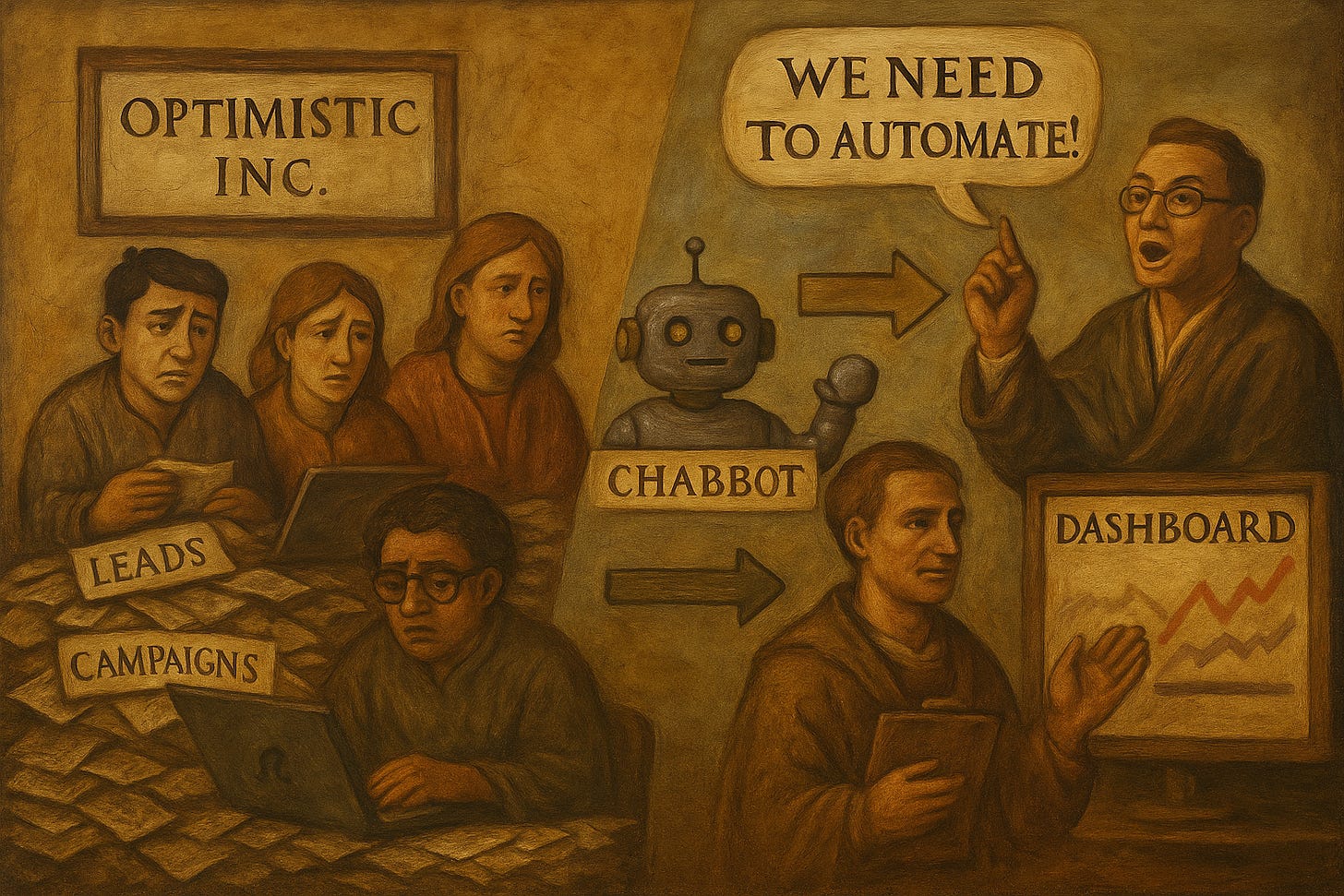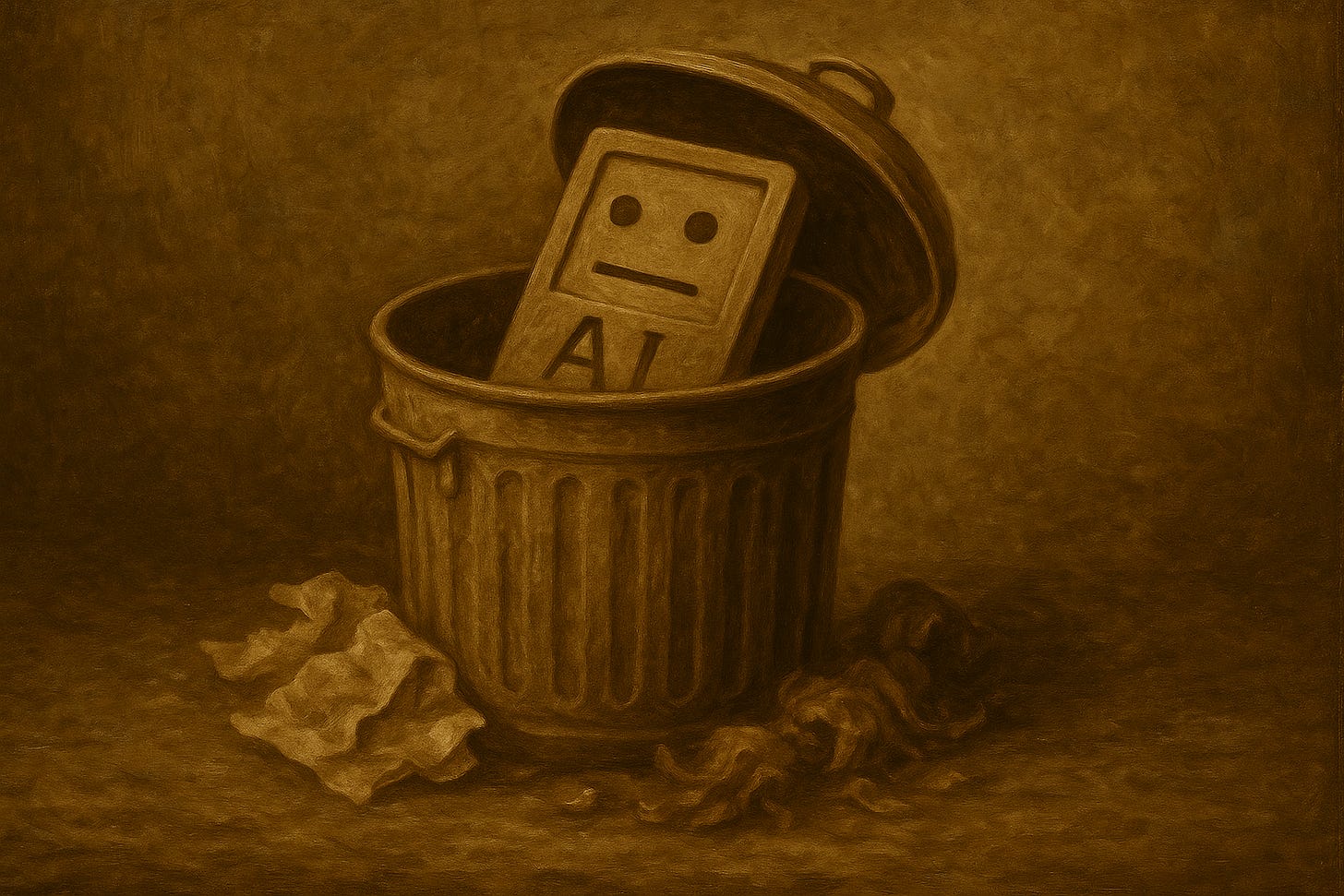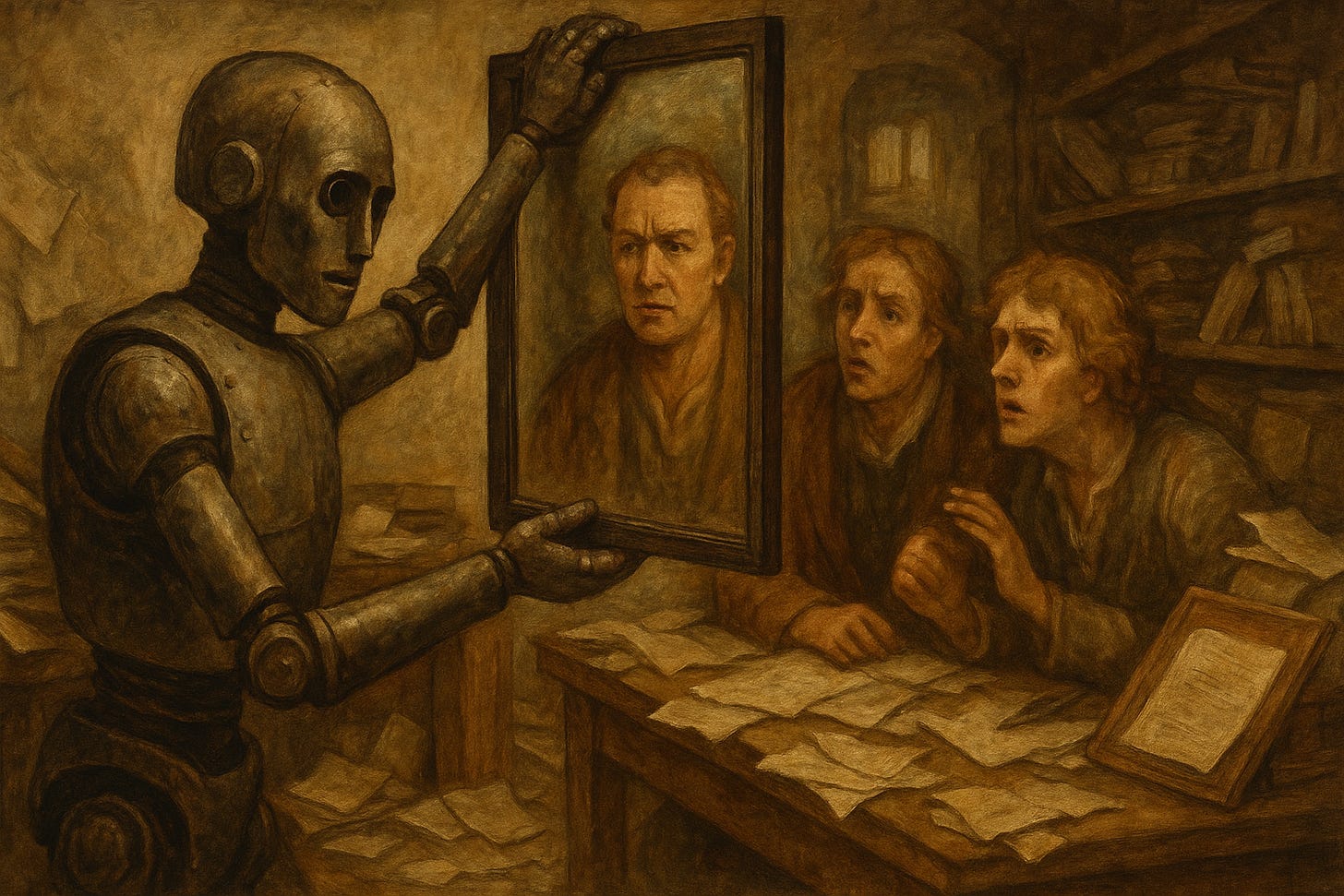Digital Duct Tape
Why AI Doesn’t Fix Bad Processes, It Amplifies Them
I'm going to tell you a story.
Once upon a time, a company, let’s call them Optimistic Inc., was drowning in spreadsheets. The sales team logged leads in one sheet, the marketing team tracked campaigns in another, and customer support had a magical Excel sheet only they could decipher. Sometimes, the “smart-techy” intern could summon dark Excel formulas just to make it work.
Then came AI.
“We need to automate!” shouted a very enthusiastic Manager after reading two Digital Anthology articles and hearing someone say “GPT” three times like Beetlejuice.
So, they hired a fancy consultant, bought some AI tools, slapped a chatbot on their website, and plugged in a dashboard that updated in real-time…still based on the same tangled web of spreadsheets.
Guess what happened?
Nothing improved. Actually, everything got faster… at going wrong.
The Speed of Stupid
Here’s the truth: AI doesn’t fix bad processes. It amplifies them. Like adding nitro to a car on Asphalt, things may move quicker, but you’re still headed toward chaos, except you’re doing it in reverse with machine learning.
If you automate a broken system, you don’t get a smarter system. You get efficient dysfunction. Garbage data? AI will analyze, visualize, and hallucinate garbage faster. Redundant approvals? Now they’re automated... and still redundant. Confusing workflows? Congratulations, now I am even confused too.
It’s like building a high-speed train on a zigzag track. Just because it’s automated doesn’t mean it’s optimized.
The Tech-First Trap
Most companies don’t set out to sabotage themselves with technology. It just sort of happens like buying a treadmill to “get fit” and then using it exclusively to dry laundry.
The culprit? The Tech-First Trap.
It goes like this: Buy shiny tool, Plug into chaotic systems, Hope for magic, Blame consultants when it breaks. This mindset is powered by magical thinking, where AI is treated like fairy dust sprinkled over spreadsheets and expected to turn them into strategic gold.
But AI is not fairy dust. It’s a mirror. A brutally honest, overly enthusiastic mirror that reflects everything in your system, your outdated approval chains, your tangled workflows, your mysterious “do-not-touch” reports, and just gives it back to you with fancier graphs, a chatbot, and a GPT-generated summary that sounds helpful but says nothing.
Here’s the kicker: bad process plus AI equals faster failure. Most organizations skip the boring, important stuff, like “Why do we even do this step? Who needs this report? Is there a better route from A to B that doesn’t involve four systems, three approvals, and a handwritten memo?”
But instead of asking these questions, they pull out the corporate Ouija board and chant: “Let’s automate A, B & C… because… AI!” This is how you end up with an AI-generated report that declares, with confidence, “Your revenue is probably purple.”
You didn’t fix the plumbing. You just installed a smart faucet that sprays chaos more efficiently and messes up the floor.
What You Should Do Instead
AI can be amazing. But only if you give it a sane playground to run around in. Otherwise, it's like asking a toddler to organize your taxes. Here’s how to do it right:
Audit the Process Before You Automate. Yes, this means actual work. Yes, this means talking to people. And no, you can’t skip this and hope the AI figures it out on its own. Pull apart your process. Line by line. Step by questionable step. I will go an extra step, gathering your team in a room, to ask “Why?” until people either give me a good reason or cry. That’s how you find something worth changing!
Redesign for Simplicity. This is where you break things gently. Start by hunting down sacred cows. These are those untouchable practices that no one questions because “that’s how we’ve always done it,” or “Janet said so in 2008.” Guess what? Janet retired. Throw away those dusty rituals. Burn the ten-step approval chain to ash and start fresh.
Keep it clean. Keep it lean, because complexity plus AI equals disaster, but simplicity plus AI equals magic.
Then Add AI Carefully. Now, and only now, should you invite the cybertrons to the party. Automate the parts that are repetitive and predictable. If your current process can barely handle Excel macros without summoning IT support, it’s not ready for AI. Think of AI as a sous-chef, not the head chef. Let it chop, slice, and stir. But don’t give it full control of the kitchen unless you want pasta in your coffee.
Also, start small. Run pilot tests. Watch closely. Ask, “Did this actually help… or did we just automate a bad decision with more confidence?”
Finally, Monitor. Tweak. Iterate. AI isn’t a Roomba, you can’t just “set it and forget it.” You have to feed it updated data. It’s more like a hyperactive intern with access to your entire filing cabinet: full of potential, but prone to wild decisions if left unsupervised.
You need to feed it fresh data regularly (confusing inputs = strange outputs), and define success clearly. tweak it. Nudge it. Watch it like it owes you. Test often. Talk to the people using it, they’ll tell you if your chatbot is helpful…or just very good at politely being useless.
Think of AI like a public park. If you don’t maintain it, it becomes overrun by squirrels, bad intentions, and forgotten projects.
Final Thought: AI Is Not Your Savior. It’s Your Mirror.
AI is powerful. It's shiny. It speaks in confident tones and spits out graphs that can tell the truth. But if you’re automating a mess, all you’re doing is giving it a faster engine and a louder horn.
Before you unleash an AI to "fix things," ask yourself: Are we fixing the process, or just adding polish to dysfunction? Remember, automation is like caffeine; It makes a good system better, but it makes a broken system crash faster.
So slow down. Rethink. Redesign.
Because a smart bot running a dumb system is still…well, a dumb move.






